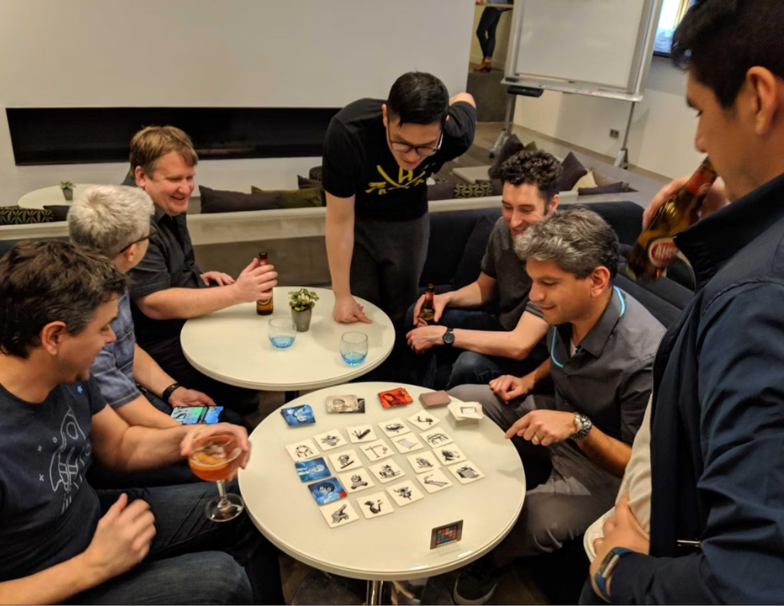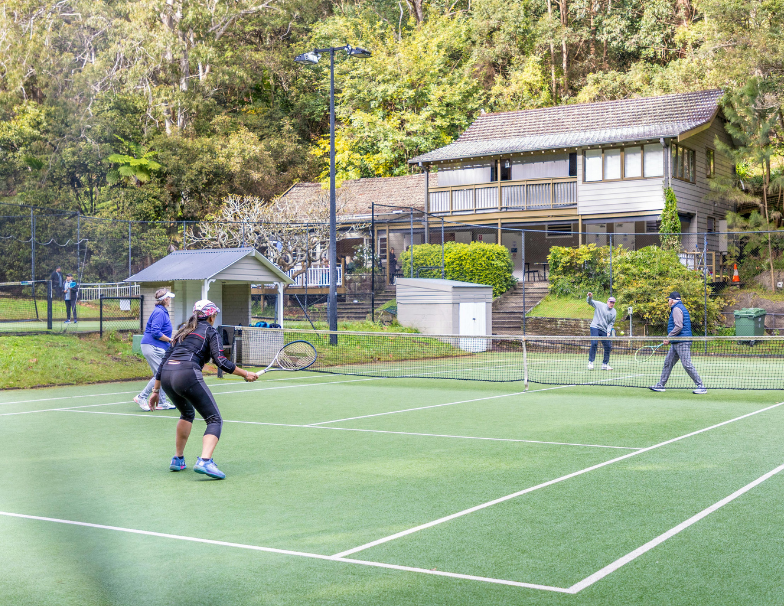The Best Practices for Effective Strategic Planning Retreats

Strategic planning retreats are crucial for aligning your team, setting actionable goals, and driving business growth. In this guide, we’ll uncover best practices, from evaluating success and enhancing team cohesion to developing leadership skills and setting clear objectives.
Key Takeaways
- Successful strategic planning retreats focus on creating clear goals and aligning participants toward a shared vision, leveraging data-driven insights for informed decision-making.
- Fostering team cohesion through engaging activities and diverse perspectives enhances collaborative environments, leading to more innovative solutions and comprehensive strategies.
- Selecting the right location and structuring a clear agenda are essential for maintaining focus during retreats, while proper documentation ensures accountability and tracking of progress.
Understanding Strategic Planning Retreats

Strategic planning retreats are designed to form stronger collaborations, develop clear strategies, and create a roadmap for business success. These retreats provide a unique opportunity for participants to step back, see the big picture, and align their efforts towards common goals. At the beginning of a strategic planning retreat, participants should discuss the broad picture, external forces, and the organization’s mission. This sets the stage for productive discussions and ensures everyone is on the same page.
The planning process during the retreat often involves creating a purpose statement, which sparks important conversations about the current status and future goals of the organization. Using an external facilitator can help maintain focus and manage interpersonal dynamics, ensuring that the sessions remain productive.
Trust and respect among participants are crucial for open and honest discussions, which are essential for effective high level strategy development for people thinking.
Evaluating Success and Direction
Evaluating the success and direction of your organization is a fundamental aspect of any strategic planning retreat. Before diving into new strategies, it’s important to take a step back and review the current positioning of your organization. This involves:
- Evaluating team performance
- Identifying strengths
- Pinpointing areas for improvement
Conducting research on the organization’s current positioning before the retreat and sharing the findings with participants ensures everyone has the same baseline information.
Clear alignment on the key components of the strategic plan is essential for a productive strategic planning process. Using tools like a free scorecard can help assess a team’s strategic alignment.
During the retreat, reviewing goals and actions to ensure they are going align with performance evaluations is crucial. This alignment helps in setting realistic and achievable objectives that guide the organization towards its vision for the future.
Enhancing Team Cohesion
Team cohesion is the glue that holds the fabric of any successful organization together. Strategic retreats facilitate informal interactions, which can lead to stronger relationships among team members. Engaging in fun activities at retreats can reduce stress, enabling team members to bond in a relaxed atmosphere. These activities not only serve as icebreakers but also help in building trust and camaraderie among participants. The team’s efforts in these retreats are crucial for fostering a collaborative environment.
Inclusivity plays a significant role in enhancing team cohesion. Key aspects to consider during retreats include:
- Offering a platform for underrepresented voices during discussions to foster a more comprehensive understanding of team dynamics and challenges.
- Maintaining respectful and inclusive language throughout the event to promote a sense of belonging and enhance employee engagement.
- Emphasizing diversity and inclusion to lead to a stronger sense of belonging and improve overall strategic planning.
Team-building activities during retreats help strengthen interpersonal connections, which are crucial for effective collaboration. These activities, coupled with leadership exercises, can build trust among team members, facilitating open communication and collaboration. Participants often leave strategic retreats with enhanced self-awareness about their leadership styles and how they impact team dynamics.
Developing Leadership Skills
Developing leadership skills is a primary purpose of strategic planning retreats. Engaging in leadership activities during retreats can help individuals practice essential skills like decision-making and effective communication. These activities often take place in low-stakes environments, allowing leaders to experiment with new approaches without the fear of immediate repercussions. This combination of leadership activities and low-stakes scenarios creates an ideal environment for effective decision-making growth.
The experience gained from these activities is invaluable. Leaders can take what they have learned and apply it to their everyday roles, ultimately benefiting the entire organization. The challenges faced and overcome during the retreat help in developing a more resilient and capable leadership team, ready to tackle the organization’s strategic goals.
Choosing the Right Location

Choosing the right location for a strategic planning retreat is crucial for its success. Consider the following factors:
- Prioritize nature-based venues as they promote mental clarity and creativity.
- Select an off-site venue to prevent distractions and improve focus during the retreat.
- Consider the atmosphere of the venue, as it can significantly influence the mindset and productivity of the retreat participants.
Venue selection should consider:
- Whether the setting fosters a sense of purpose and collaboration.
- A variety of venue options, from rustic lodges to upscale hotels, to cater to different team dynamics.
- Ensuring the venue has necessary amenities, such as breakout spaces and technology support, which is critical for a successful retreat.
Offsite provides a wide range of venue options and can assist in selecting the next complete perfect location for your high retreat, which many clients appreciate in a way.
Establishing Clear Goals

Establishing clear goals is the bedrock of a successful strategic planning retreat. The retreat should begin with a clear idea of desired outcomes to guide its structure. Engaging in future visioning helps participants articulate what success looks like for the organization in the coming years. This process ensures that everyone is aligned and working towards the same vision and mission.
An effective strategy requires:
- Focus, limiting the number of strategic objectives to no more than five.
- Measurable objectives to assess the retreat’s effectiveness.
- Working backwards from the ideal result as a recommended approach to formulate a strategy for the retreat.
- Participants reflecting on previous accomplishments to measure success.
- Identifying future priorities.
Before the retreat, it is essential to establish clear objectives to determine the success of the event. Key points to consider include:
- Identifying three to five key strategic objectives to maintain a focused approach.
- Clearly defining the desired outcomes of the retreat.
- Ensuring participants stay focused.
- Keeping the strategic planning process on track.
Identifying Key Participants
Identifying key participants is vital for the success of a strategic planning retreat. Key participants should include leadership staff, board subcommittee members, and stakeholders. Having a minimum of 10 participants ensures diverse input and effective discussions. The diverse perspectives brought by these participants enrich the strategic planning process.
Active engagement is crucial for a successful strategic planning retreat. It should occur before, during, and after the meeting. Clear objectives are essential to guide the retreat and ensure all participants are aligned. Ensuring that participants are well-prepared and actively engaged throughout the retreat fosters a collaborative environment conducive to effective strategic planning.
Setting an Agenda
Setting a clear and flexible agenda is crucial for a productive strategic planning retreat. The agenda should address critical problems identified from pre-retreat evaluations to ensure focused discussions. Differentiating between strategic planning and operational planning in the agenda helps clarify objectives.
Including break-out seminars in the agenda can handle specific challenges effectively. A facilitator should keep the meeting focused and on track, ensuring the best productive discussions.
Time for discussing follow-up strategies should be included at the end of the retreat agenda. The recommended duration for a strategic planning session for most organizations is two full days.
Structuring the Process
Structuring the process of a strategic planning retreat is essential for its success. Using an external facilitator can help by:
- Maintaining focus during discussions
- Managing group dynamics
- Preventing individuals from dominating the conversation An effective facilitator plays a key role in ensuring productive and balanced discussions.
Plan to align the long-term vision, mission, and values of the organization with the strategic planning session. Prioritizing SWOT factors into categories helps focus on critical issues needing immediate attention.
If a designated facilitator is not available, the organizer must manage both roles to ensure the planning session remains on track.
Utilizing Data-Driven Insights

Utilizing data-driven insights is essential for informed decision-making during strategic planning retreats. Pre-retreat preparations, such as conducting organizational audits and SWOT analysis, can enhance the effectiveness of the meeting. Gathering insights from stakeholders through interviews and surveys prior to the retreat enhances the discussion around evaluation.
Participants should be well-prepared with relevant insights and data to contribute meaningfully to discussions during the retreat. Assigning pre-retreat tasks, like SWOT analysis, helps make better informed perspectives to discussions. It is important to know that these preparations may significantly enhance the quality of the retreat and participants need to recognize their importance in their work.
Elevate insights from assessments to inform the time together to think get at the retreat.
Encouraging Diverse Perspectives
Encouraging diverse perspectives ensures all voices are heard, minimizes isolation, and enhances the effectiveness of the strategic plan. Including diverse members from various levels and departments can enrich discussions during strategic planning retreats. Breaking participants into small, diverse groups for SWOT analysis promotes varied perspectives.
These diverse perspectives can lead to more innovative solutions and a more comprehensive understanding of the organization’s challenges and opportunities. A facilitator should consider these diverse thoughts and ensure they are incorporated into the strategic discussions.
Prioritizing Actionable Items
Prioritizing actionable items is crucial to ensure that the strategic objectives set during the retreat are manageable and focused. Strategic objectives should be limited to a few key priorities to maintain focus. A detailed action plan must be created to translate goals into actionable tasks.
Involving the implementation team in developing tactical plans ensures practicality and accountability. Reviewing action items at the meeting’s end clarifies tasks and responsibilities, ensuring accountability among team members.
Regular reviews and updates of the strategic execution plan help maintain its relevance and effectiveness in response to changing conditions.
Documenting Everything
Documenting everything during the strategic planning retreat is crucial for tracking progress and ensuring accountability. Effective documentation allows teams to revisit ideas and verify the application of conclusions made during the retreat. Post-retreat, it’s essential to consolidate feedback into a final strategic document to ensure accountability.
Proper documentation leads to a structured approach in implementing conclusions reached during the retreat. By making sure that every discussion and decision is documented, participants can keep track of progress and stay aligned with the agreed-upon actions.
Utilizing Offsite’s Services
Offsite provides top-tier planning support for corporate retreat planning, ensuring all logistical details are managed. Offsite partners with numerous global venues, allowing organizations to find suitable locations for their retreats. Clients can benefit from significant savings, potentially up to 50%, by utilizing Offsite’s exclusive deals and pricing from premier venues.
Engaging an external facilitator through Offsite can help manage team dynamics and keep strategic discussions on track. Offsite offers end-to-end retreat planning services at a flat, per-person rate, streamlining the planning process. The Offsite team utilizes their collective experience to ensure a seamless booking experience for users.
Preparing for Virtual Strategic Planning Meetings

Preparing for virtual strategic planning meetings involves:
- Structuring multiple sessions focused on assessing the current status, defining future direction, identifying obstacles, and outlining actions.
- Holding each online session for 3 hours to ensure effective engagement.
- Scheduling roughly one week between each session to reduce screen fatigue.
Various tools and resources can be used to enhance participation during virtual strategic planning meetings, ensuring all voices are heard. These tools help replicate the collaborative environment of in-person retreats, making virtual meetings just as effective.
Post-Retreat Implementation
A successful strategic planning retreat culminates in a commitment from participants to the developed strategies and implementation plans. Tactical implementation plans should be developed by those responsible for executing the strategies, rather than during the retreat. After the retreat, strategic plan pillars and objectives should be shared with stakeholders for feedback.
To track and measure the progress of a strategic plan, key results must be created. This ensures that the strategies developed during the retreat are effectively implemented and continuously improved.
Summary
Strategic planning retreats are essential for aligning teams, setting clear goals, and driving business growth. They provide organizations with the opportunity to step back, evaluate performance, and create actionable strategies while fostering team cohesion and leadership development. Key elements of a successful retreat include choosing the right location, setting a structured agenda, incorporating data-driven insights, and ensuring diverse perspectives are heard. Offsite plays a vital role in simplifying the planning process, offering access to premier venues, experienced facilitators, and cost savings. Whether conducted in-person or virtually, strategic planning retreats help organizations stay focused, accountable, and prepared for long-term success.
FAQs
- What is the purpose of a strategic planning retreat?
A strategic planning retreat helps teams step back from daily operations, align around a shared vision, and set actionable goals that guide long-term business success.
- How do you measure the success of a strategic planning retreat?
Success is measured by clear goal alignment, actionable outcomes, improved team cohesion, and effective follow-through on documented strategies.
- Why is choosing the right location important for a retreat?
The right location reduces distractions, fosters creativity, and creates an environment conducive to focus, collaboration, and innovative thinking.
- What role does Offsite play in strategic planning retreats?
Offsite helps organizations streamline retreat planning by offering access to exclusive venues, professional facilitators, and cost-effective packages that ensure a seamless experience.
You may also like
Unique spaces for your next offsite
Find distinctive venues for your upcoming corporate retreat.
Stay Updated with Our Insights
Get exclusive content and valuable updates directly to you.







